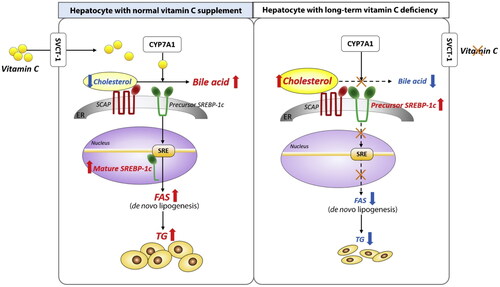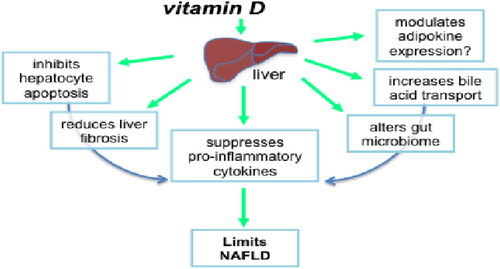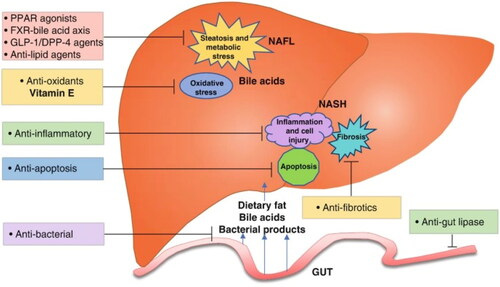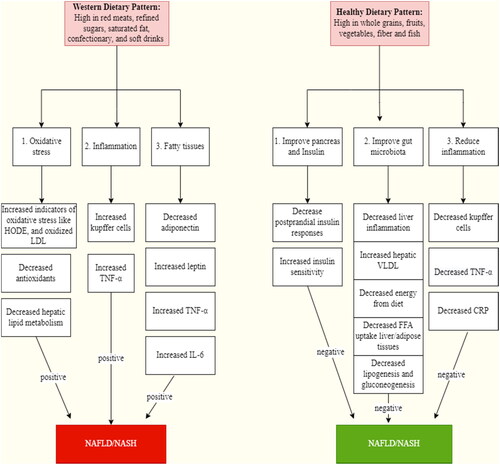Figures & data
Figure 1. A persistent lack of vitamin C causes a disturbance in the hepatic de novo lipogenesis pathway by impairing the conversion of bile acid to cholesterol. The current research’ straightforward graphical abstract. Normal hepatocytes exhibit de novo lipogenesis in the left panel. Right panel: Impaired de novo lipogenesis in long-term vitamin C–deficient hepatocytes. CYP7A1: cholesterol 7α-hydroxylase; ER: endoplasmic reticulum; FAS: fatty acid synthase; SCAP: SREBP cleavage-activating protein; SRE: sterol regulatory element; SREBP-1c: sterol regulatory element-binding protein-1c; SVCT-1: sodium-dependent vitamin C transporter 1; TG: triglycerides (Source: Lee et al., Citation2021).

Figure 2. Through several possible interrelated processes, vitamin D may slow the course of NAFLD (Source: Gorman et al., Citation2015).

Figure 3. Function of Vitamin E in regulating NAFLD (Source: Banini & Sanyal, Citation2019).

Table 1. Displays documented studies on the benefits of vitamin E in people with NAFLD.
Figure 4. Consequences of western and healthy dietary patterns on the onset of non-alcoholic steatohepatitis (NASH) and non-alcoholic fatty liver disease (NAFLD). HODE: hydroxyoctadecadienoic acids; oxidized LDL: lipid oxidation products; TNF: tuber necrosis factor; IL-6: Interleukin 6; VLDL: very low density lipoproteins; FFA: free fatty acids; CRP: C-reactive proteins.

Data availability statement
The data that support the findings of this study are available on request from the corresponding author.
